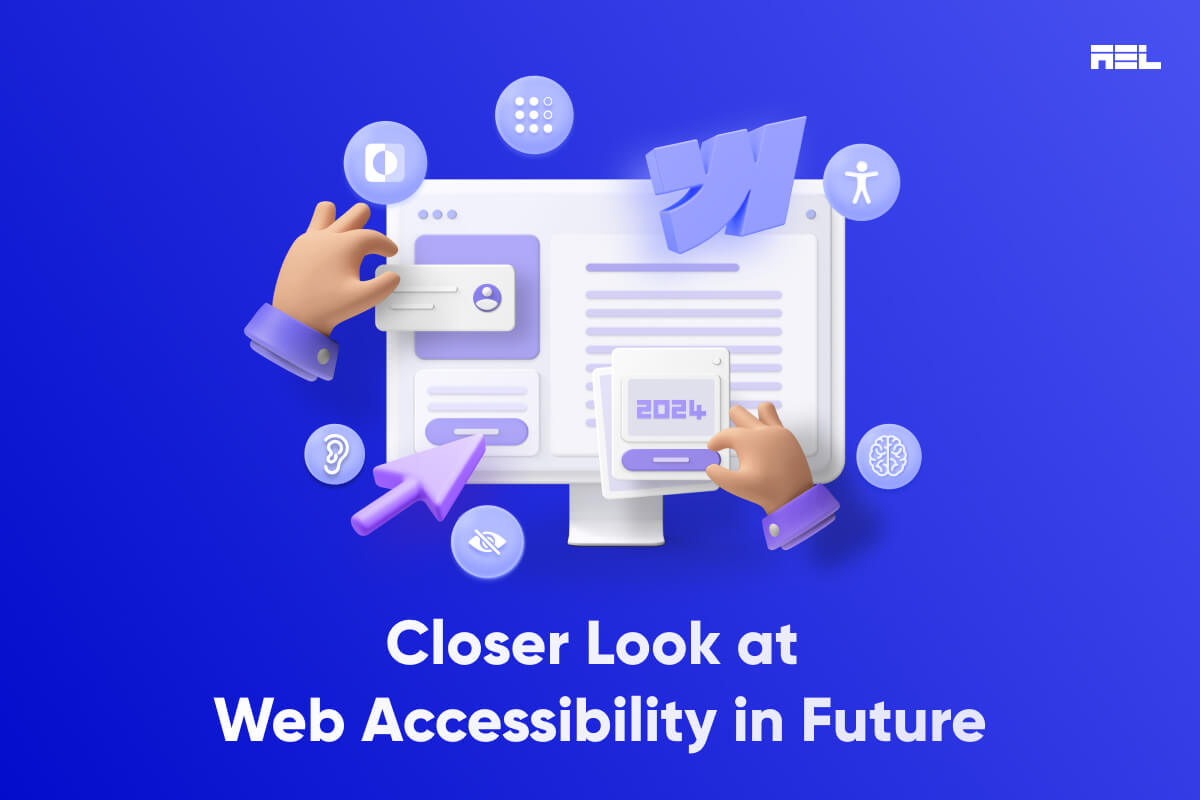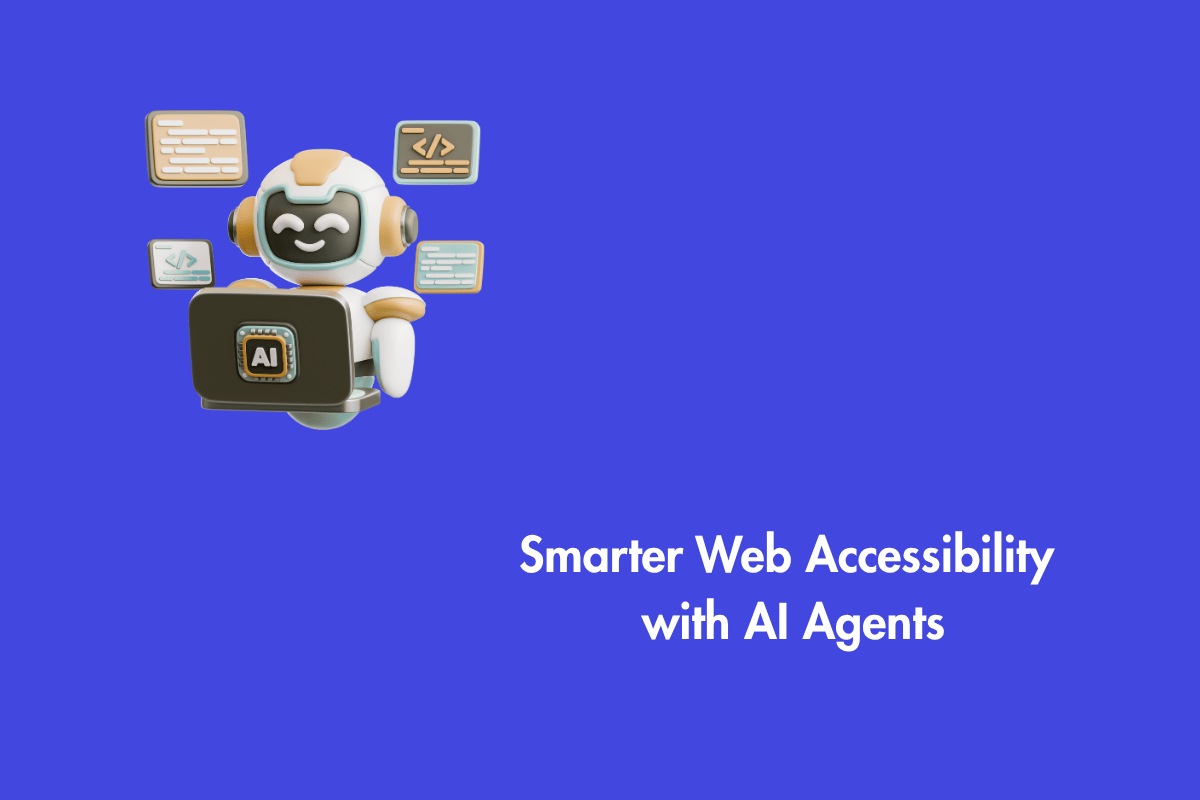As technology progresses, the emphasis on crafting inclusive online experiences for users of all abilities grows more pronounced. In this era of continuous innovation, there’s palpable excitement about the groundbreaking developments, trends, and shifts that will mold the future of web accessibility.
As we embark on this journey into tomorrow’s digital landscape, let’s delve into the possibilities, envisioning a web where inclusivity is not merely an objective but a fundamental aspect of the digital terrain.
Table of Contents
Evolving Accessibility Standards:
Guided by the Web Content Accessibility Guidelines (WCAG), accessibility standards have transformed from the initiation of WCAG 2.0 in 2008 to the recent milestone, WCAG 2.2, unveiled in October 2023. Each update signifies a new layer, seamlessly integrating both innovative and enhanced standards into the digital framework.
Acknowledging the progress made, WCAG 2.1 addressed challenges related to mobile experiences and the diverse needs of individuals with disabilities, establishing a solid foundation for progress. With the introduction of WCAG 2.2, these foundations are fortified, expanding criteria to foster a more inclusive online environment.
The adoption lies in adhering to the latest version – WCAG 2.2 not only ensures conformance but also positions your website as a pioneer in adopting the latest and most effective accessibility practices. Beyond staying current with the latest standards, this strategic move aligns with legal requirements, making your digital space welcoming and legally sound for all users.
While some are trying to land on a strategy whether to come into conformance with WCAG 2.0/2.1 before meeting 2.2 standards, a few organizations have already pledged to adopt the new standards.
UK government websites follow guidelines from Government Digital Service(GDS), a government body responsible for overseeing the implementation of policies, to implement WCAG 2.2. Local councils under the GOV.UK domain aim to adopt WCAG 2.2 within a year of its Oct 2023 release. Top educational institutions, like the University of Rochester, are prioritizing WCAG 2.2 implementation. The university pledges to adopt WCAG 2.2 in all new digital content after January 1, 2024. These efforts underscore a commitment to accessibility standards.
Technological Developments for Web Accessibility
The year 2024 is prepared to witness substantial technological developments in the field of web accessibility. These advancements are expected to change how individuals with disabilities interact with digital content.
AI stands out as a transformative force in web accessibility. The strides made in the year 2023 present encouraging opportunities for 2024. Currently, AI is demonstrating its value for individuals with visual challenges. Alt text generators using Vision AI are very popular now.
Industry Trends in Accessibility
The biggest news brought in the new year was the acquisition of the AI-based overlay provider, UserWay, by Level Access. If that didn’t establish the mainstreaming of overlays in the industry, the move was bolstered by Mike Paceillo’s appointment of Chief Accessibility Officer of Audio Eye.
Audio Eye, another overlay provider, made the news in 2022 by acquiring BOIA and went public.
These moves show that veterans from industry leaders who provide manual accessibility services realize the potential of adopting AI in remediation. Only time will tell if those investments will pay off.
Accessibility Testing and Consultation
While AI in remediation is powerful and demonstrates much potential, it may not be an end-all solution. As the overlays inject front-end scripts, they work as a temporary fix. Meaning that if the overlay is removed from the site, any remediation changes made will be lost. A use case with merit is using them during a transition period while the root causes are fixed in the backend.
There are still problems with this scenario. The AI tools lack context for the remediation they are making. It can be compared to the difference between automated and authored alt text.
The biggest drawback is that the overlays are extremely cost-effective: $49/month vs a manual audit that can run up in the 1000s of dollars. Companies get lazy, and the widgets stay on forever.
Making websites accessible from the ground up is a vital responsibility for our business, not only because it is the right thing to do but because of my lived experience as someone with a disability.
Assessing digital assets such as websites, apps, software, images, videos, and documents manually should be paramount and will help better understand how the disabled user group interacts with technology.
Our process includes being fierce advocates to Shift-Left; injecting accessibility into every phase of the product development lifecycle. We do this by reviewing designs and annotating them before they are handed off to development teams.
Inclusive Design Practices
Inclusive design is a concept that has been gaining popularity amongst the UX/UI circles. It refers to creating tools, platforms, and content that all users can fully participate in and connect with regardless of their background or ability. This can involve creating content, digital products, and software not only for users with disabilities but also for those from diverse linguistic, cultural, and ethnic groups. This begins with a strong UX research strategy.
What makes inclusive design important?
Websites that are inclusive and easy to use for all users are guaranteed by web accessibility. This benefits users, businesses, and the community at large for the following reasons:
- Inclusivity: Every person is different, with special skills and limits. Equal access and navigation to websites for individuals with impairments is made possible through online accessibility, which levels the playing field for all users.
- Innovation: Global leaders like Microsoft, Adobe and Google have recognized that identifying the users needs, and wants can increase the reach of their products. New products and processes are being built driven by inclusive design, resulting in innovation at a scale we couldn’t imagine a decade ago.
Inclusive Design Tips for Accessibility in Social Media
In recent years, accessibility on social media has drawn more attention. It’s no longer a niche topic, in part because of certain recent product debuts like TikTok and X (formerly Twitter). Today, it’s a practice that every social media marketer needs to take into account. The following are best practices for creating social media material that is inclusive of all users:
- Alternative Text for Pictures: On web pages, alt text offers a textual substitute for non-text content.
- Individuals with visual impairments, depending on a screen reader to access content on a website, will discover it to be beneficial.
- Keyboard navigation: It is essential for people who cannot use a mouse or a touch screen. All functionality, including form controls, links, buttons, and media player controls, should be accessible using the keyboard.
- Color contrasts: To be inclusive of people with vision and color problems, relevant adjustments are to be made during colored representations. The norm is to have a contrast ratio of 4.5:1 for text and images of text.
- Captions and transcripts for multimedia: The counterpart for the media content presented should always be present to facilitate people with hearing disabilities to consume content as well.
Legal and Regulatory Frameworks
In current times, anyone must be inclusive, adhering to the most recent norms laid out by WCAG. Although these standards are guidelines, they are not regulatory laws that bind an organization to legal compliance. A more popular legal framework that governs disability rights in the U.S is the ADA. As disability rights advocates are still fighting a battle with the DOJ, here are some wins for the Accessibility community in the new year::
Key Highlights from the Latest Judgment: A Summary of New Developments
1. Kiosk accessibility update:
This case was filed by The American Council for the Blind (ACB) against Quest Diagnostics for creating an inaccessible touchscreen kiosk experience. After a week-long bench trial in Los Angeles, the federal court found Quest Diagnostics violated Title III of the Americans with Disabilities Act (ADA).
The ruling was in favor of ACB and a nationwide class of blind and low-vision Quest patients. The court found that Quest failed to provide people who are blind with full and equal enjoyment of Quest’s services and facilities because of their disability.
2. Adrian Roselli overlay lawsuit
The lawsuit filed by AudioEye, an overlay company, against Adrian Roselli, a critic of overlays, has been dropped. The terms of the settlement are not open to public.
As part of the settlement, AudioEye agreed to make a financial contribution of no less than $10,000 to the National Federation for the Blind. The lawsuit had sparked significant discussion in the accessibility community.
3. Adoption of accessibility for state and local governments
The U.S. Department of Justice (DOJ) is advancing a proposed rule to improve web and mobile app accessibility for people with disabilities under Title II of the Americans with Disabilities Act (ADA).
Recently, the DOJ secured a settlement with Service Oklahoma, resolving findings that the agency violated the ADA by maintaining an inaccessible mobile application. Since this has happened before the release of the Title II regulations, it is a warning sign for the State and Local Governments across USA to become accessible ASAP or go under the lens of DOJ for the same.
Web Accessibility’s Future
The accessibility industry, once thought to be boring, has had a lot of changes in 2023, which we are going to see implemented this year.
AI in Accessibility is getting integrated fast, and we may see its application extend to Augmented Reality (AR) and Virtual Reality (VR). Mobile Accessibility, that took the backseat to Web Accessibility, will now gain more importance with the DOJ judgment against Service Oklahoma. The European Accessibility Act 2025, which now extends minimum accessibility requirements to private sector products and services is going to see a wider adoption of accessibility as the 2025 deadline for reporting approaches quickly.
Closing Thoughts
One must realize that if accessibility is about removing barriers, anti-discriminatory practices is the starting point.
If you are interested in Shifting-Left, AEL Data equips companies to do so with Accessibility Design Reviews and Annotations to complete a seamless design to dev handoff. Contact us at info@aeldata.com to get started.



